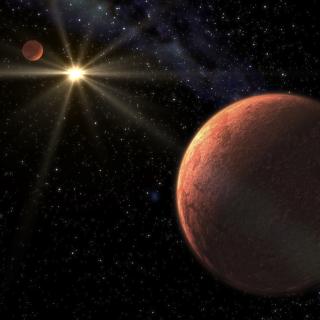Bibcode
Peláez-Torres, A.; Esparza-Borges, E.; Pallé, E.; Parviainen, H.; Murgas, F.; Morello, G.; Zapatero-Osorio, M. R.; Korth, J.; Narita, N.; Fukui, A.; Carleo, I.; Luque, R.; Abreu García, N.; Barkaoui, K.; Boyle, A.; Béjar, V. J. S.; Calatayud-Borras, Y.; Cheryasov, D. V.; Christiansen, J. L.; Ciardi, D. R.; Enoc, G.; Essack, Z.; Fukuda, I.; Furesz, G.; Galán, D.; Geraldía-González, S.; Giacalone, S.; Gill, H.; Gonzales, E. J.; Hayashi, Y.; Ikuta, K.; Isogai, K.; Kagetani, T.; Kawai, Y.; Kawauchi, K.; Klagyvik, P.; Kodama, T.; Kusakabe, N.; Laza-Ramos, A.; de Leon, J. P.; Livingston, J. H.; Lund, M. B.; Madrigal-Aguado, A.; Meni, P.; Mori, M.; Muñoz Torres, S.; Orell-Miquel, J.; Puig, M.; Ricker, G.; Sánchez-Benavente, M.; Savel, A. B.; Schlieder, J. E.; Schwarz, R. P.; Sefako, R.; Sosa-Guillén, P.; Stangret, M.; Stockdale, C.; Tamura, M.; Terada, Y.; Twicken, J. D.; Watanabe, N.; Winn, J.; Zheltoukhov, S. G.; Ziegler, C.; Zou, Y.
Bibliographical reference
Astronomy and Astrophysics
Advertised on:
10
2024
Journal
Citations
5
Refereed citations
4
Description
The TESS mission searches for transiting exoplanets by monitoring the brightness of hundreds of thousands of stars across the entire sky. M-type planet hosts are ideal targets for this mission due to their smaller size and cooler temperatures, which makes it easier to detect smaller planets near or within their habitable zones. Additionally, M dwarfs have a smaller contrast ratio between the planet and the star, making it easier to measure the planet's properties accurately. Here, we report the validation analysis of 13 TESS exoplanet candidates orbiting around M dwarfs. We studied the nature of these candidates through a multi-colour transit photometry transit analysis using several ground-based instruments (MuSCAT2, MuSCAT3, and LCO-SINISTRO), high-spatial resolution observations, and TESS light curves. We present the validation of five new planetary systems: TOI-1883b, TOI-2274b, TOI-2768b, TOI-4438b, and TOI-5319b, along with compelling evidence of a planetary nature for TOIs 2781b and 5486b. We also present an empirical definition for the Neptune desert boundaries. The remaining six systems could not be validated due to large true radius values overlapping with the brown dwarf regime or, alternatively, the presence of chromaticity in the MuSCAT2 light curves.
Related projects

Very Low Mass Stars, Brown Dwarfs and Planets
Our goal is to study the processes that lead to the formation of low mass stars, brown dwarfs and planets and to characterize the physical properties of these objects in various evolutionary stages. Low mass stars and brown dwarfs are likely the most numerous type of objects in our Galaxy but due to their low intrinsic luminosity they are not so
Rafael
Rebolo López

Exoplanets and Astrobiology
The search for life in the universe has been driven by recent discoveries of planets around other stars (known as exoplanets), becoming one of the most active fields in modern astrophysics. The growing number of new exoplanets discovered in recent years and the recent advance on the study of their atmospheres are not only providing new valuable
Enric
Pallé Bago